High Volume Low Pressure (HVLP) sprayers have become an essential tool for both professional painters and DIY enthusiasts. These sprayers allow for a smooth, even coat of paint with minimal overspray, making them ideal for a variety of projects ranging from furniture refinishing to automotive painting. However, one key element that can significantly impact your results is selecting the right paint for your HVLP sprayer.
We’ll explore the best paints for HVLP sprayers, offer tips on how to choose the right paint, and answer some frequently asked questions. Whether you’re painting a car, refinishing cabinets, or tackling a home improvement project, this guide will help you achieve flawless results.
What is an HVLP Sprayer?
Before diving into the specifics of paint types, let’s briefly review what an HVLP sprayer is and why it is a popular choice for many painters. An HVLP sprayer uses a high volume of air at low pressure to atomize the paint, creating a fine mist that is easy to apply. This results in a smooth finish with reduced overspray and waste. HVLP sprayers are known for their efficiency and ability to produce professional-quality results, which is why they’re widely used in various industries, including automotive, furniture, and home improvement.
The HVLP system works by using a specialized nozzle to break the paint into fine droplets, allowing for a more controlled application. This makes it easier to paint large surfaces with a consistent coat and helps to achieve a more even, professional-looking finish.
Why is Choosing the Right Paint Important for HVLP Sprayers?
Choosing the best paint for your HVLP sprayer is crucial to ensuring a smooth, even coat. Not all paints are suitable for HVLP sprayers, and using the wrong type of paint or improper viscosity (thickness) can lead to poor results. Here are a few key reasons why selecting the right paint matters:
- Viscosity and Flow: HVLP sprayers require paint with the right viscosity. Paint that is too thick will clog the sprayer, while paint that is too thin will cause drips and uneven coverage.
- Smooth Finish: The right paint will ensure a smooth, professional-quality finish without bubbles, streaks, or imperfections.
- Durability: The type of paint you choose will impact how long the finish lasts. Some paints are more resistant to wear and tear, while others may require more frequent touch-ups.
- Compatibility: Not all paints are designed for use with HVLP sprayers. Some paints may need to be thinned or diluted to the proper consistency to work well with HVLP systems.
Types of Paint for HVLP Sprayers
When choosing paint for your HVLP sprayer, it’s essential to consider the type of project you are working on and the finish you want to achieve. Here are the most common types of paints used with HVLP sprayers:
1. Latex Paint
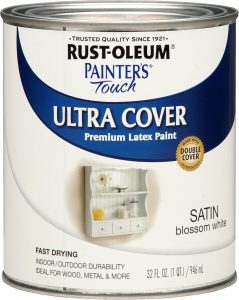
Latex paints are water-based paints commonly used for interior and exterior projects. They are easy to work with and offer a durable finish, making them popular for painting walls, trim, doors, and furniture. Latex paint is generally thinner than oil-based paints and works well with HVLP sprayers, though it may need to be thinned for optimal flow.
Pros:
- Dries quickly
- Easy to clean with water
- Non-toxic and low odor
- Available in a variety of finishes (matte, satin, gloss)
Cons:
- May require thinning for use with HVLP sprayers
- May not provide as smooth a finish as other paint types on certain surfaces
Best for: Interior and exterior walls, trim, and furniture projects.
2. Oil-Based Paint
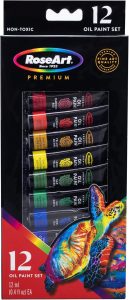
Oil-based paints offer a smooth, durable finish that is perfect for cabinetry, trim, and high-traffic areas. These paints have a longer drying time compared to latex paints, which allows for more time to adjust and smooth out the paint. However, oil-based paints can be more difficult to work with, as they require mineral spirits for cleanup, and they also have a stronger odor.
Pros:
- Provides a hard, durable finish
- Ideal for high-traffic areas and surfaces subject to wear and tear
- Excellent flow and leveling properties
Cons:
- Strong odor and longer drying times
- Requires special cleanup with mineral spirits
- Higher VOC content, making it less environmentally friendly
Best for: Trim, cabinets, doors, and furniture.
3. Acrylic Paint
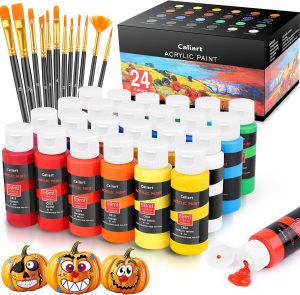
Acrylic paint is another water-based option that is similar to latex but is often used for more detailed projects. It’s thinner and has a smoother consistency, making it ideal for fine finishes on furniture, cabinets, and crafts. Acrylic paints are also more vibrant and versatile, providing a glossy finish that can be enhanced with a clear coat.
Pros:
- Dries quickly
- Available in a variety of finishes
- Easy cleanup with water
- Non-toxic and low odor
Cons:
- May require thinning for use with HVLP sprayers
- Not as durable as oil-based paints
Best for: Artistic projects, crafts, and furniture painting.
4. Enamel Paint
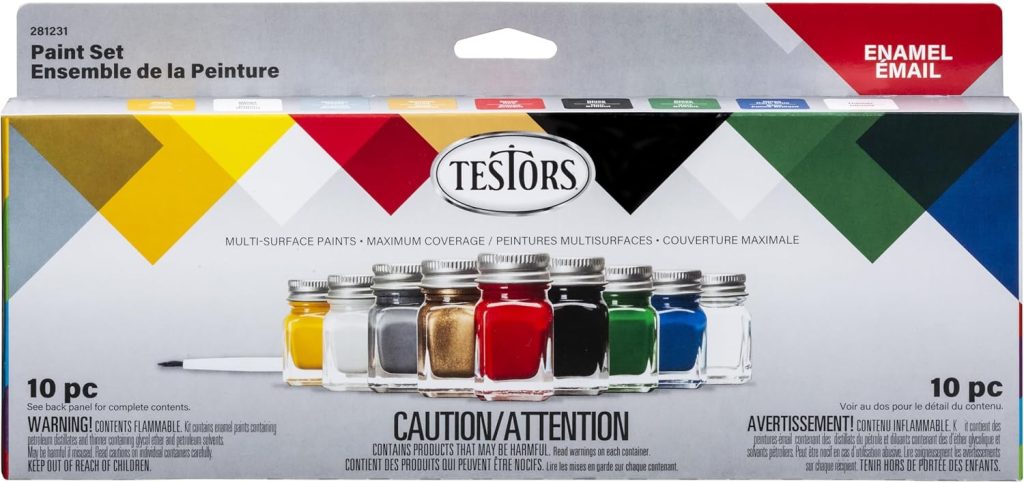
Enamel paint provides a tough, glossy finish that resists wear and tear. It is often used for painting metal, outdoor furniture, or items that need to withstand the elements. Enamel paints come in both oil-based and water-based formulas, and they are typically thicker, so they may need to be thinned before using in an HVLP sprayer.
Pros:
- Tough and durable
- Provides a hard, glossy finish
- Good for outdoor projects and items exposed to the elements
Cons:
- Requires thinner for use with HVLP sprayers
- Longer drying times
Best for: Metal, outdoor furniture, and high-wear areas.
5. Automotive Paint
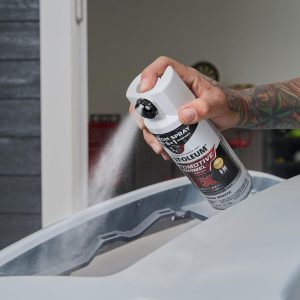
Automotive paints are specifically designed for vehicles and are often used with HVLP sprayers. These paints are formulated to provide a durable, glossy finish that can withstand outdoor conditions, UV exposure, and physical wear. Automotive paints can be either acrylic, enamel, or urethane-based, and they often require multiple layers and a clear coat for the best finish.
Pros:
- Extremely durable and long-lasting
- Provides a glossy, professional finish
- Resistant to UV damage and wear
Cons:
- Requires proper ventilation and protective gear
- May require specialized equipment for application (e.g., airbrush or spray gun with fine tips)
Best for: Car painting, boat painting, and other automotive projects.
6. Chalk Paint
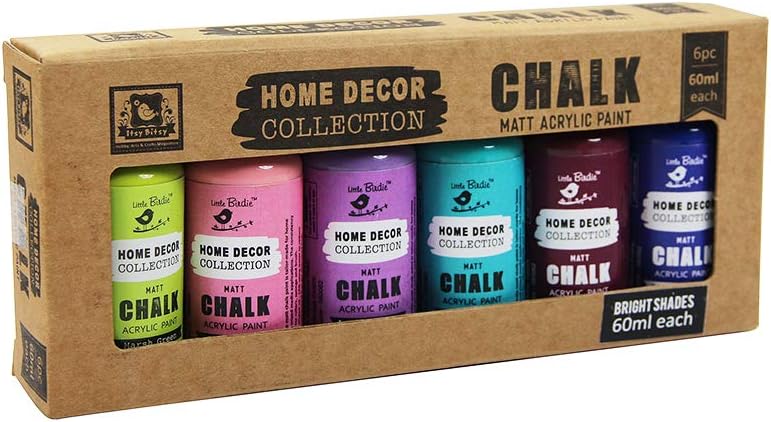
Chalk paint is a popular choice for furniture refinishing and crafts. It has a smooth, matte finish and is ideal for creating a vintage or shabby-chic look. Chalk paint is easy to apply with an HVLP sprayer, and it typically doesn’t require a primer.
Pros:
- Provides a matte, vintage finish
- No need for priming in most cases
- Easy to work with, even for beginners
Cons:
- May not be as durable as other paint types
- Requires a protective topcoat for better durability
Best for: Furniture refinishing, crafts, and decorative projects.
Best Paint for HVLP Sprayers: Our Top Picks
Now that we’ve covered the various types of paints you can use with HVLP sprayers, here are some of the best options on the market:
1. Behr Premium Plus Ultra Interior Paint & Primer in One
This water-based paint offers excellent coverage and a smooth finish, making it ideal for use in HVLP sprayers. It works well for walls, trim, and even furniture.
Pros:
- Paint and primer in one
- Low VOC content
- Smooth, even finish
Best for: Interior walls and trim.
2. Rust-Oleum Universal All Surface Spray Paint
Rust-Oleum’s Universal line is a versatile paint that can be used on a variety of surfaces, including metal, wood, plastic, and more. It’s available in both gloss and matte finishes and works well with HVLP sprayers.
Pros:
- Available in multiple finishes
- Can be used on almost any surface
- Durable and long-lasting
Best for: Metal furniture, outdoor projects, and crafts.
3. Sherwin-Williams ProClassic Interior Acrylic Enamel
This is a professional-grade acrylic enamel that provides a smooth, glossy finish. It’s excellent for cabinetry, trim, and doors, making it a great choice for those looking to achieve a durable, high-quality finish.
Pros:
- High durability and abrasion resistance
- Smooth finish with excellent flow
- Fast-drying
Best for: Cabinetry, trim, and doors.
4. Valspar Signature Interior Paint & Primer
Valspar Signature is a high-quality, all-purpose interior paint that works well with HVLP sprayers. It provides excellent coverage and is available in various finishes to suit different project needs.
Pros:
- Paint and primer in one
- Great coverage and smooth application
- Available in various finishes
Best for: Walls, trim, and furniture.
5. Dupli-Color Automotive Spray Paint
For automotive projects, Dupli-Color offers a premium automotive paint that provides a high-gloss finish and long-lasting durability. It’s available in a wide range of colors and is ideal for use with HVLP sprayers.
Pros:
- Durable and resistant to wear
- Available in a wide range of colors
- Professional-quality finish
Best for: Automotive projects and metal surfaces.
FAQs About the Best Paint for HVLP Sprayer
1. Can I use regular paint with an HVLP sprayer?
Yes, but the paint must be thinned to the correct viscosity to ensure smooth application. Some paints, such as latex, may require thinning with water.
2. What is the best paint for an HVLP sprayer for furniture?
Acrylic paint or enamel paint is ideal for furniture projects. Both types offer a smooth finish and durability. For a matte look, chalk paint is also a great choice.
3. Do I need to thin paint for an HVLP sprayer?
In most cases, yes. Depending on the paint type, you may need to thin it with water (for water-based paints) or a specific thinner (for oil-based paints) to achieve the right consistency.
4. Can I use an HVLP sprayer for automotive paint?
Yes, HVLP sprayers are commonly used for automotive painting. However, automotive paints often require special techniques and additional equipment, such as clear coats.
5. What is the best paint for metal surfaces with an HVLP sprayer?
For metal surfaces, enamel or automotive spray paint is highly recommended due to its durability and ability to withstand wear and tear.
6. How do I clean my HVLP sprayer after use?
Cleaning your HVLP sprayer is essential to maintain its performance. Clean the sprayer immediately after use by flushing it with the appropriate solvent (water for water-based paints, mineral spirits for oil-based paints).
7. Can I use HVLP sprayers for small projects like crafts?
Yes, HVLP sprayers are versatile and can be used for smaller craft projects as well
as larger home improvement tasks.
8. How do I know if I’ve thinned the paint enough for the sprayer?
The paint should have a similar consistency to milk. If the paint drips too slowly or is too thick, it may need more thinning.
9. Can I use HVLP sprayers for outdoor furniture projects?
Yes, HVLP sprayers are excellent for outdoor furniture projects, especially when used with enamel or automotive paints designed for outdoor use.
10. Is HVLP spraying better than traditional brushing?
Yes, HVLP spraying provides a smoother, more even coat with less effort compared to traditional brushing, especially on large surfaces.
Conclusion
The best paint for your HVLP sprayer depends on your project type, surface, and finish preferences. Whether you’re painting furniture, automotive parts, or interior walls, selecting the right paint is key to achieving a professional-quality finish. With the paints and tips shared in this guide, you’re well on your way to mastering your HVLP sprayer and getting the results you want.
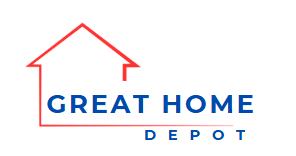
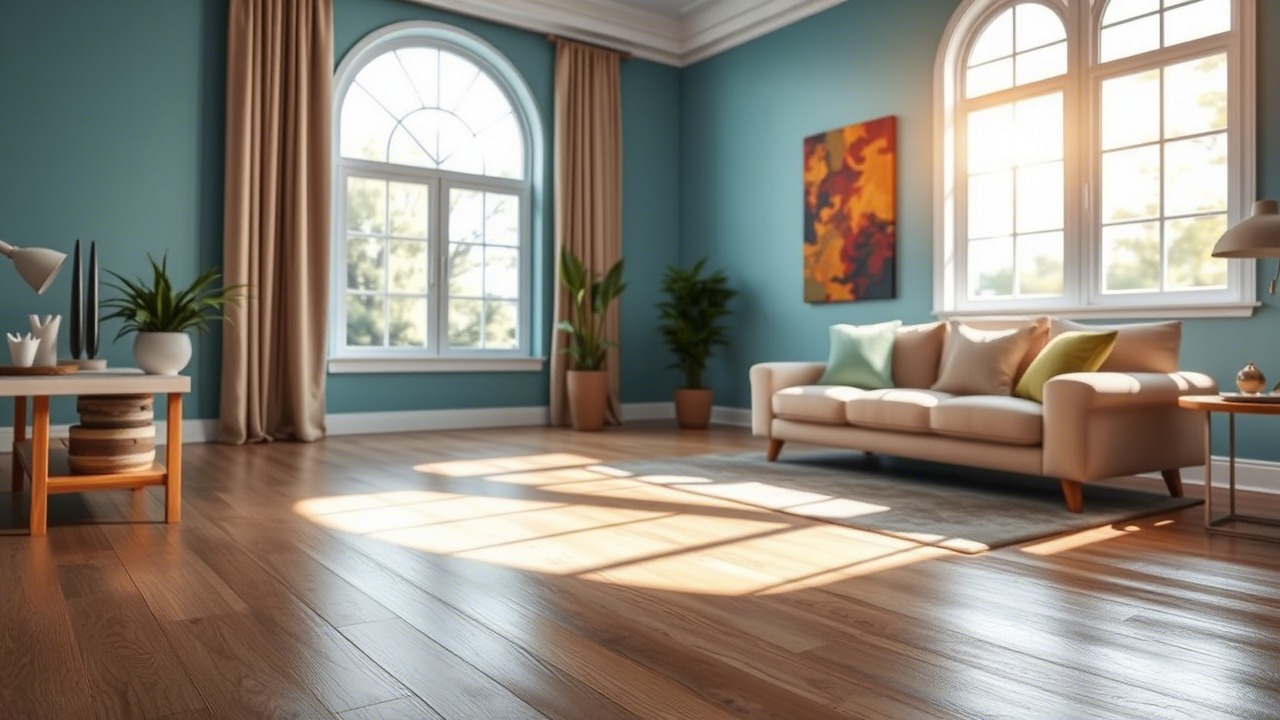
Leave a Reply